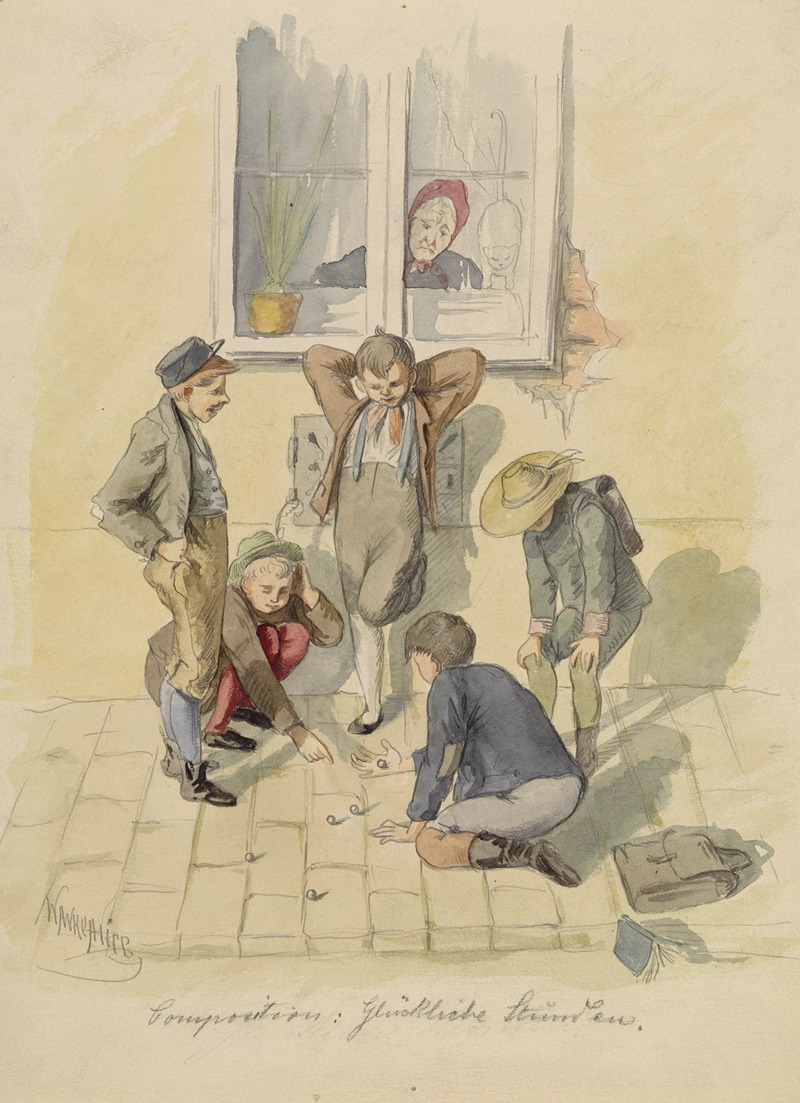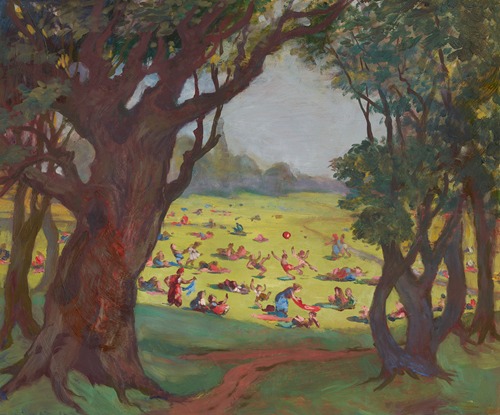
Alice Wanke was an Austrian illustrator, graphic artist, painter, and decorative artist.
Alice Wanke was the daughter of landscape and genre painter Ludwig Wanke. She completed her secondary education and took painting lessons at Robert Scheffer's painting school. From 1894 to 1900, she studied at the Vienna School of Applied Arts under Eduard Leisching, Felician Myrbach, and Josef Hoffmann. She attended Franz von Matsch's specialist painting class and, in 1911/12, Rosalia Rothansl's workshop for textile work. From 1901 to 1911, she worked as a commercial artist for Charles Cabos, imperial and royal purveyor of wine, tea, and dessert pastries, and later briefly at the Augarten porcelain factory. In 1915/16 and 1917/18, she taught crafts, drawing, and painting at the girls' high school in Vienna-Margareten. She then worked independently.
The artist designed posters, advertisements, trademarks and logos, vignettes and book illustrations. The text and 24 colour illustrations for the children's book “Die Geschichte vom schmutzigen Peter” (The Story of Dirty Peter, no date) were by Wanke. She frequently illustrated the later editions of the Viennese children's newspaper “Meine erste Zeitung” (My First Newspaper). Wanke exhibited book graphics at the International Exhibition for Book Trade and Graphic Arts (Bugra) in Leipzig in 1914. The artist designed caricature-like postcard series in the style of the Vienna Secession for Theodor Stroefer's art publishing house in Nuremberg and the Viennese publishers M. Munk and Postkartenverlag Brüder Kohn. These were on display in an exhibition at the Academy of Fine Arts Vienna in 2017. Wanke's designs for a cover page of the Berlin magazine Die Dame, as well as graphics and bookplates in woodcut, linocut, and etching, are also documented.
In 1908, Wanke designed figurative murals for the Nachtcafé in Vienna's Apollo Theater. In 1910, she created the murals for the reception room of the arts and crafts pavilion for the International Hunting Exhibition in Vienna. The ceramics for the 14 stations and the tabernacle painting in the exhibition chapel were also her work. Further murals were created in 1912 for the restaurant “Tabakspfeife” in Lünetten. She exhibited portraits at the exhibition of the Association of Austrian Visual Artists in Innsbruck in 1900. Designs for jewelry, tableware, vases, cans, lamps, and ornamental studies have been preserved.
Alice Wanke's works can be found in the Vienna Museum, the University of Applied Arts Vienna, the Austrian National Library, the Academy of Fine Arts Vienna, and the Museum of Applied Arts (Vienna).

